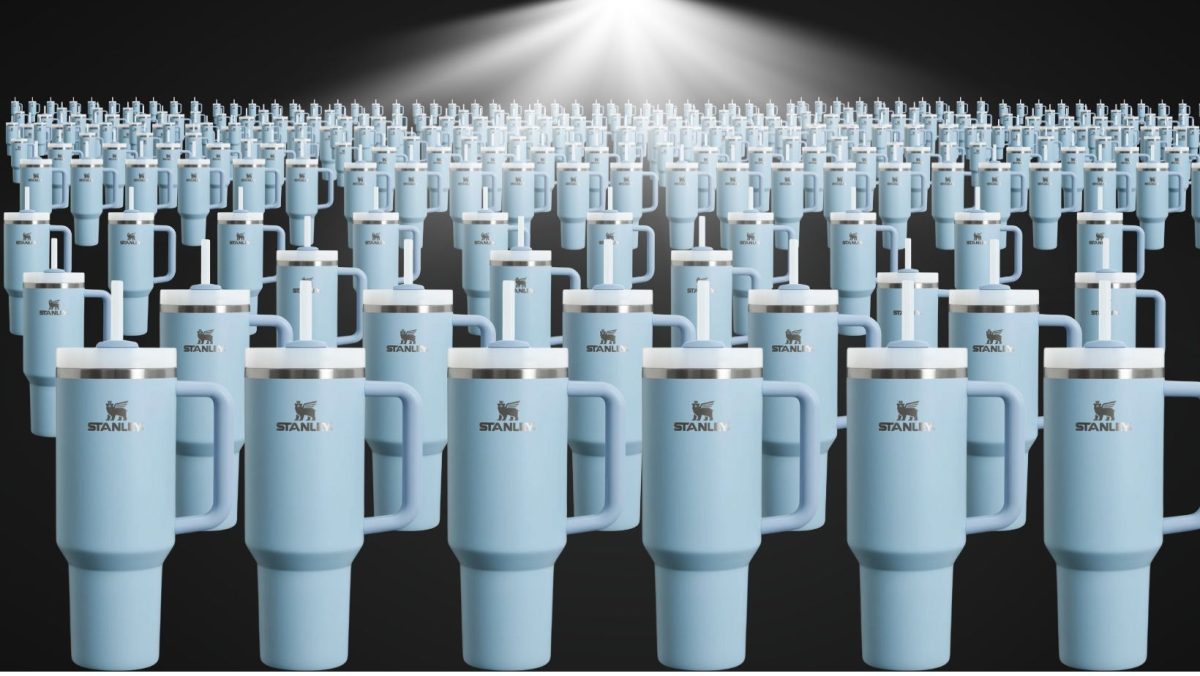If you’ve been keeping up with TikTok culture recently, then you’ve definitely heard of the infamous Stanley QuencherTM. This insulated water bottle has existed for over a hundred years, but it’s recently gained mass popularity online because of one woman’s account that her Stanley survived a flaming car accident with ice still inside. If you go anywhere then you’re likely to see someone walking around with a Stanley cup.
It seems like every couple of years, there is a new insulated water container that the public fawns over. In the early 2010s, it was the Yeti mug, in 2019 it was the Hydroflask, and now it’s the Stanley cup. While there’s nothing wrong with wanting a good water bottle that is guaranteed to keep your drink cold, I have to wonder about the impacts of consumer trends like this. It becomes a little more concerning when you consider that there are accessories for Stanley cups, and people collecting the cups by the dozens. In five years, when another hot new reusable water bottle comes around, most of these things will be forgotten, donated, or trashed.
One of the main selling points of the Stanley tumbler is that it can be used over and over again. Ideally, this would mean that it is a sustainable replacement for plastic water bottles, which are undoubtedly terrible for the environment. In a way this is true, as the Stanley cup is made from recycled steel, making the mass production of the cups much more ecological. However, when you consider the number of people buying these water bottles en masse, it basically defeats the point of the “reusable” aspect.
On January third, Starbucks and Stanley launched their limited edition, hot pink, Starbucks x Stanley Quencher at Target. Soon after, videos were posted of people waiting in lines before the store even opened to get their hands on the coveted cup. Posts on social media showed the cups flying off the shelves in seconds, with many people taking as many as they could fit in both hands. One man even jumped over the Starbucks counter to steal a box of the cups. While this is an extreme example of this form of overconsumption, the fact still remains that to some people, these cups are revered as more than just a water bottle.
Wherever you go, you are almost guaranteed to see a Stanley cup. They have become a status symbol, and when products are popular, it might make other people feel like they need one to fit in. Pushing trends like this is a strange way of making people feel bad about themselves if they don’t have enough money to afford them.
Collector culture has existed forever. It can be seen in Pokemon cards, baseball cards, comics, vinyl records, clothes–the list goes on forever. One of the greatest appeals of collecting is the ability to resell the product at an inflated price, and the Stanley cup is no exception. The retail value for the cup is typically $45.00, but people resell it for over $100 on sites like eBay. For example, the previously mentioned limited edition Stanley x Starbucks cup is selling for over $300 on eBay. It’s not a cheap purchase, and it’s a little concerning how such an expensive product is on so many influencers’ “must-have” lists.
In my opinion, the Stanley trend is a bit wasteful, both monetarily and ecologically. There are hundreds of water bottles that stay cold just like Stanleys, that last forever, and are much cheaper, and I just don’t understand how a water bottle has become a way to fit in. However, this issue isn’t new. The water-bottle-consumption phenomenon has existed forever, because with the speed of the internet and the desire to conform, trends form quickly, and companies can use them to get more sales. As it stands, we can already see the Stanley starting to die out, soon to be overtaken by the Brumate or Owala tumbler.











































